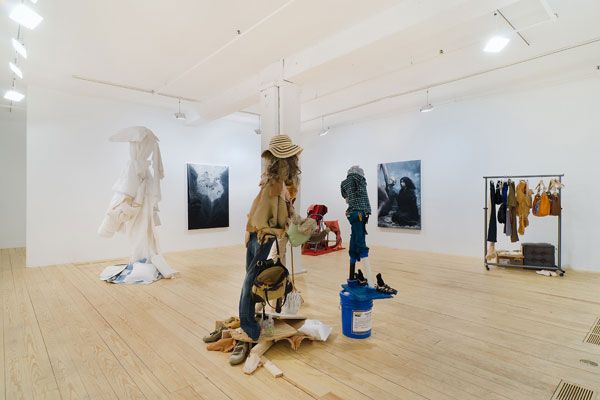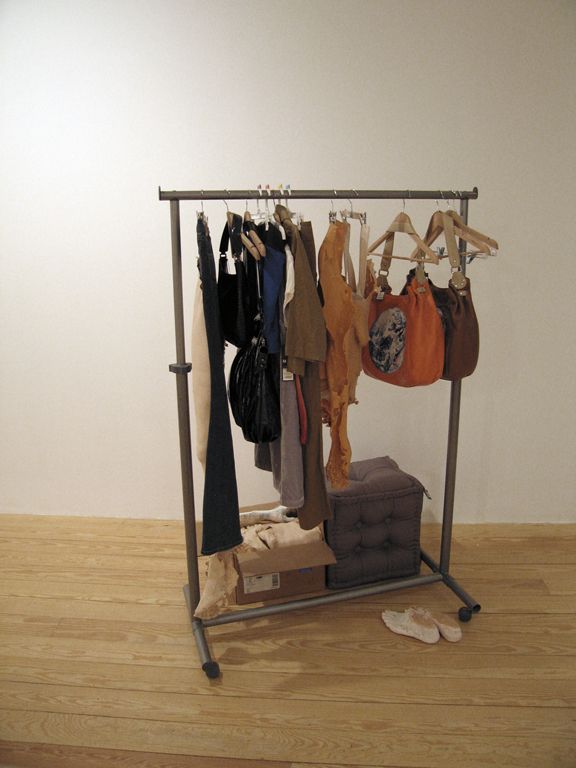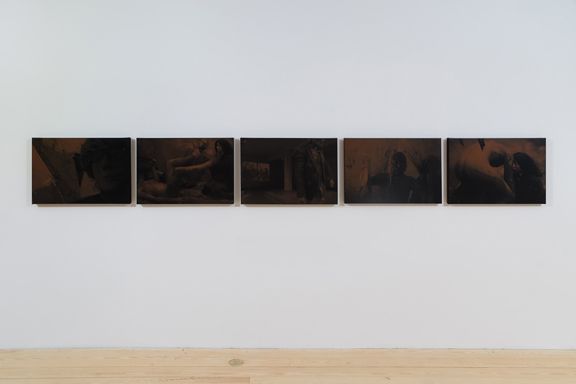Lizzie Fitch 16 January 2009 - 28 March 2009
Foxy Production presents Geneva-based painter JONATHAN DELACHEAUX and Philadelphia-based sculptor LIZZIE FITCH in an exhibition that places the figure within revealing new fields of association. Both artists create identities that seem to be unraveling before our eyes, caught within ever tangling narrative threads.
Jonathan Delachaux portrays characters within extended storylines that explore the mythological resonance of the figure within the painted scene. He uses a highly unusual technique: painting on plastic film in reverse, with the final layer of paint applied being, in effect, the background; he then places the painted plastic on a canvas and, when dry, removes the plastic to reveal a painting with an uncannily flat, photographic quality. In this series of paintings, Delachaux’s characters build a Golem, the man-made creature of clay first cited in the Talmud. But rather than being the subject of a precise moral narrative, the Golem in Delachaux’s works literally muddies canvases, the scenes upon them, and the relationship between canvas and scene. The works move from almost cinematic depictions to stylized, impressionistic views where the plastic film of the artist’s process becomes a central subject of the painting itself. It is as if the Golem has run amok in the artist’s studio, contaminating the artistic process, like a primeval computer virus, and in doing so confounds the divisions between artist, process, and product.
Lizzie Fitch’s sculptural work brings together disparate objects, styles, and modes of assembly to construct figures and environments that push the limits of what the body is, and what it can represent. Inspired by the cut and paste of digital technology, she combines clothing fresh from the store, hand-made items she has purchased, objects she has fashioned herself, and cast body parts, among many other elements, in works that range from the figurative to the radically deconstructed. Even though her choice of materials is broad and their arrangements remarkably varied, each work maintains an expansive, anthropomorphic quality that hovers between figurative resolve and dissolution. The panoply of objects that Fitch uses coheres into moody narratives that place the viewer within a seductive, yet conflicted space of both lyrical engagement and unease. Fitch creates an evocative theater of the body, where definitions of character and self, of persona and person, are rendered dangerously and delightfully unstable.
Both Delachaux and Fitch’s work brings to mind, in different ways, the theater productions and paintings of avant-garde Polish artist and director Tadeusz Kantor, in particular his use of mannequins as central players, and body parts as costume. It is as if Delachaux and Fitch have taken on board his project to continually reinvent the figure within ever broadening terms of reference, to expand exponentially upon what the human body can represent.
Credits
Installation photography by Mark Woods.



